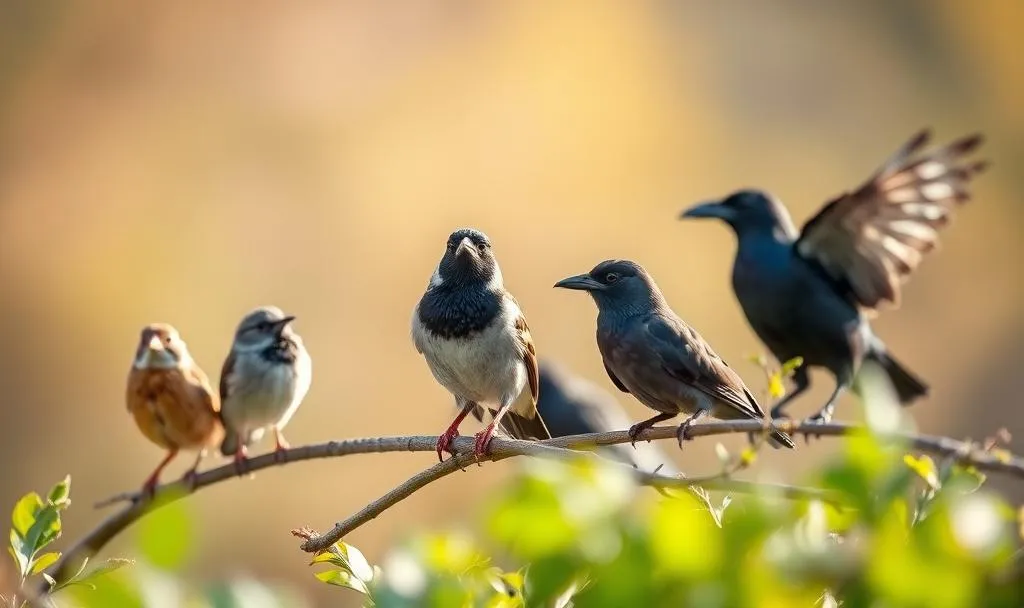
Home | Anecdotes | Articles | Icebreakers | Programs | Quotations | ShopDashboard | Log in | Sign up
Strictly for the Birds
by Jan Baker

In my last piece about crickets, I finished with the words 'So not too different from humans'. I believe that is true about many species, but in particular about birds. I think they have many similarities:
- Their beauty and grace
- Their sense of fun
- Their trainability
- Their need to dance
Beauty and grace
The first point was clearly demonstrated when I asked my mother, if she was reborn, which creature she would most like to come back as. 'A seabird,' she replied dreamily, 'gliding silently over the ocean.'
Lovely, I thought. I then gently asked her what she thought I would come back as. 'A fish,' she replied.
With a glint in her eye. You can go off people.
Sense of fun
As for the second point: I was watching a rather lovely male Brimstone butterfly flying around the garden. I then noticed a male sparrow, sitting on the fence, who was watching it as well. He then turned his head towards me and gave me the closest to a grin a bird can give without moving his beak. I called out 'No-o-o - don't you dare!' But of course, he did. One less for the butterfly count.
Ravens apparently do have a sense of fun. Whilst flying, they love to throw sticks in the air and catch them. They can also fly upside down. One has been recorded doing this for half a mile. Feet first, I hope. It was thought to be a courtship ritual. But recent research believes they just do it for enjoyment - and probably to show off to smaller species of crows.
Trainability
The third point is trainability. For this, I am using peregrines and pigeons as good examples.
Their use in WWII unfortunately worked for both sides. Allied planes often carried homing pigeons. These were released if they were shot down behind enemy lines. Disappointingly, when nearly home, they were eagerly killed and eaten by English Peregrines. One of the earliest instances of 'Friendly Fire'. Sadly, the Air Ministry had many of these quisling falcons destroyed. However, in response to the fact that Nazi pigeons were being released from E-Boats (fast attack craft), a top-secret falcon squadron was recruited to patrol the skies above the Scilly Isles. Many enemy pigeons were killed - but it was later revealed, that only two were found to carry messages. Of the two live pigeons that were captured – an RAF commander dryly related – one was put to work ‘making British pigeons’ in an MoD pigeon loft.
Need to dance
My fourth point is 'their need to dance'. Many male birds gather in something called a lek. The avian equivalent of a nightclub, whereby they dance in a group, performing individual moves and feats of strength to attract nearby females. However, females also dance. As a professionally qualified examiner and lecturer in dance (Modern Theatre Dance, Ballet etc.), I was fascinated by a female Wood Pigeon who daily danced along the long ridge of the previous garage. The simple dance consisted of: two walks forwards, jump, (twice through) - then a half turn to face the other way and preen under the wing. This was repeated a few times. Then she appeared to come to a decision. After a few seconds, she started to dance again, but this time she changed the routine to include a full turn, which allowed her to travel further along the ridge each time. Not exactly Gillian Lynne standard (she wouldn’t appreciate ‘Cats’). However, the new choreography, clearly thought through, quickly attracted the attention of a handsome male pigeon. I hope they are still dancing.
More Nature articles